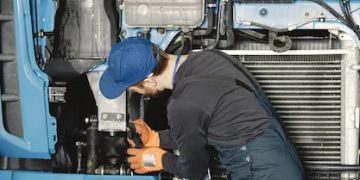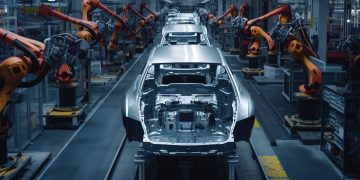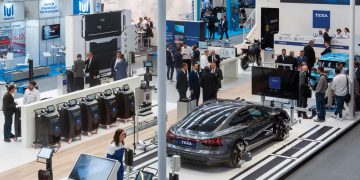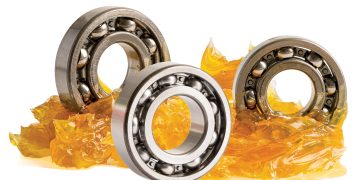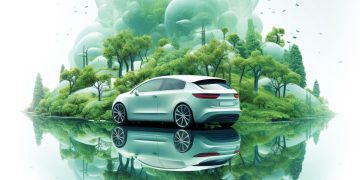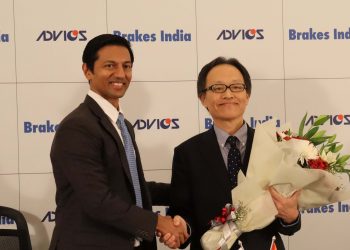What are the main components of an electric vehicle powertrain? how do they differ from those in traditional internal combustion engine vehicles?
The elephant in the room is battery. Batteries are incomparable in three things, cost, size, and weight. Many people have a misconception that batteries are the substitute for engines. But it is not. The engine is the part that produces mechanical energy which keeps the vehicle moving. But a battery is the storage of electricity and it replaces the fuel tank. The fuel of EVs are electricity and this is converted to mechanical energy by a motor instead of an engine. Depending on the motor, there will be certain control systems like the motor control unit and inverter. These are all combined called the powertrain as similar to the fuel tank, fuel system, and engine on IC vehicles. There are many other differences too. For example, there is no alternator in EVs as there is already a huge battery present. As you might be familiar with, the alternator is the component that converts mechanical energy from the engine to electrical energy in order to charge a low-voltage battery. EVs have a DC-DC converter instead. Budget-oriented vehicles generally use DC motor as it is more mature, cheap, and less complex. They are less efficient. AC motors give more efficiency and controllability but it needs an inverter.
There is a rising concern and confusion regarding the life of EV batteries. How often should the battery of an electric vehicle be replaced, and what factors contribute to the degradation of battery life?
Battery degradation is a truth. But, if we take the example of Tesla, which usually people think of as the lead in EVs, have advised their customers to strictly follow their guidelines. There are proven results where vehicles that have crossed over 2 lakh kilometers still retain a wonderful battery health of about 95%. The company has urged them not to charge the battery above 80% if they don’t have that much of a run. This turned out to be highly effective. At the same time, batteries will degrade drastically if we don’t take care of them properly. After all, a battery is a combination of several cells. It is like a chain of which cells are the links. The strength of a chain is in the weakest link. It’s good if you can replace the cells, if not, we must repair them.
In some vehicles like Ather and Tesla, we can’t repair the battery as the cells are glued under. Cylindrical batteries which are filled with polyurethane foam are designed to have a maximum life. Depreciation happens when lithium is deposited at the anode from the cathode and it is not returning. We can prevent this by following certain measures. You don’t have to fully charge the battery always. It is better not to charge above 95% and not get the battery down under 20%. The depth of discharge, which is the maximum fraction or percentage of a battery’s capacity removed from the charged battery on a regular basis, should be kept at about 70%. In this way, we can reduce battery depreciation. Nickel-cobalt-based chemistries are common on two-wheelers which have a rated capacity and usable capacity. if we take Ather 450x, it has a 2.9kWh battery but the company is giving only 2.6kWh for users.
You should not always fast charge the vehicle. Manufacturers like Tata are advising their users to do regular, overnight charging after a cycle of three fast charges. This will help the battery’s health. Continuous use of fast charging damages the cells. If a battery, whether repairable or non-repairable reaches a health of 70%, you must change the cell. It is the generally accepted limit of degradation. Often nickel-based chemistry has a fast degradation rate. We can’t deny the fact that there is confusion about the warranty of EVs. Such worries don’t make any sense. If we consider the case of mobile phones, the companies are providing only one year of warranty and we generally use them for three or four years, right? Most people would never need to change the battery on their mobile phones. This is the same with EVs. Even if the company says the warranty is 6 or 7 years or 1 lakh kilometers, that doesn’t mean it will stop working right after that.
What safety measures should be taken when working on or repairing an electric vehicle, considering the high-voltage components?
Personal safety is the first preference. It’s almost over 15 years since EVs became mainstream. Nobody has died due to electric shock till date in the EV repair industry. That doesn’t mean such a fatality will not happen anytime. So, personal safety is always the first preference and vehicle safety comes only second. Technicians should use PPEs (Personal Protective Equipments). Safety glows are mandatory.
There are three glows to ensure complete protection for the technician. These are one-liner glows, insulated rubber glows, and leather glows. Every technician should ensure that they use these three. This is the first stage of safety. In the end, we work by hand for the majority of time. If you get a shock, it will enter through one hand and pass through the other. Another thing to consider is the use of measuring tools. They must be kept if we work in live components. if we are not toiling in live components, you should work only after degenerising the vehicle. There is a process for that.
At some service centres, technicians directly disconnect MSD (Manual Service Disconnect). It is highly dangerous. A law is in practice that detains people who didn’t attend high voltage safety training or EV training from working on EVs. But, here, especially in India, if one person is trained, another three people will work depending on that one person. These are highly dangerous. As per ISO, it is mandatory to use a perimeter around the vehicle and high-voltage stickers that display an electrical hazard. Unfortunately, many Indian manufacturers don’t properly follow these.

Are there any changes to the tools and equipments used for EVs?
Insulated tools are necessary. Tools are selected by the voltage level of each vehicle. Proper degenerisation should be ensured then.
Is there any certified training available for technicians working in the EV repair industry?
In 2021, three or four qualification packs had come from ASDC like electric vehicle service technician levels 3, 4, and 5. Level 3 is the assistant EV service technician. He should not work but assist lead service technicians. I am not sure how good and well they are doing or whether they have appropriate service equipments and a working atmosphere. A good facility and adequately trained staff who follow proper rules are rare. Unfortunately, Many people who provide these courses don’t know the right conduct and guidelines. The Government is interested in starting an EV Technician course at NCVT (National Council for Vocational Training) but heavy investment becomes a challenge. Not many people are interested in investing such a heavy amount here. Even if we get the funds, the lack of skilled professionals who can provide quality education is a major problem.
What are the other advancements in vehicle technology?
EV is in the childhood stage. Every day witness the arrival of some new technology. The motors we use in two-wheelers are permanent magnates that are very difficult to make. So, now, manufacturers are interested in making motors from non-rare materials. Companies like Mahle, Ted, Rhino, and BMW, have already showcased their non-rarer magnets. So, modern technology is evolving every day. In the next five years, we might see a second generation of sodium-ion batteries. These are cheap and long-lasting. LMSP (lithium manganese phosphate batteries) are now widely used and preferred. Tesla introduced this in their vehicle. The changes in semiconductors will also affect vehicles. In the future, vehicles will be segmented into two voltage categories. 800+voltage and 400+ voltage. These will become more efficient over the years. We can’t accurately predict the changes that are going to happen for the next 10 years as the industry witnesses a rapid change during this period.
How do electric vehicle maintenance costs compare to those of traditional petrol/diesel-powered vehicles over their lifetime?
Normal vehicles have so many parts that the EVs miss. That’s an advantage for EVs. The parts they have don’t require frequent maintenance. EVs don’t have temperature fatigue like IC engines as well. They only have some inspections and checkings. At the same time, some companies are charging bizarre amounts as labour charges. Some Electric two-wheeler service centres charge more than a petrol car as labour cost. Such tendencies which loot customers should not be encouraged. EVs have very little labor to do for technicians and they charge crazy for this. That’s so pathetic.
What role does regenerative braking play in electric vehicles, and how does it impact overall energy efficiency?
It is of two types. if one person drives on highways, he must not be using regenerative braking as it negatively impacts driving pleasure. A driver will only prefer regenerative braking in cities or downhill. According to Tesla, they claim 67% to 70% regenerative braking efficiency in ideal conditions. if I use 10kWh energy and I get 67% efficiency, I will obtain 6.7kWh energy back. So, my net usage is only 3.3kWh. This is because, here, the motor is also a generator. Not every motor has regeneration. Regeneration now has many levels and you can adjust how much regeneration you want.
What are the key differences between Hybrid Electric Vehicles (HEVs), Plug-in Hybrid Electric Vehicles (PHEVs), and Battery Electric Vehicles (BEVs)? how do these differences impact their repair and maintenance?
PHEVs are a bridge between hybrid EVs and battery EVs. In normal hybrid vehicles, the battery can’t be charged from outside. If the battery goes down, the engine charges the battery in them. In the case of PHEVs, usually 10 or 15kWh batteries are used. These can be utilised just like EVs for short distances. It might run you about 40kms. But the problem is that the customer has to pay the price for the tank, engine, motor, battery, and petrol and they can be on the expensive side. The depreciation rates are high for small batteries. That’s why two-wheelers have a short warranty period and four-wheelers have a long one. That’s why India has very less amount of plugin hybrids.

How do manufacturers handle end-of-life considerations for electric vehicle batteries, and what recycling or disposal processes are in place to minimise environmental impact?
It is majorly carried out in two ways, repurposing and recycling. if it’s a battery that has removable cells, you can repurpose it and it can be used for static applications like for an inverter or solar energy storage unit. It’s okay even if battery health comes down to 50% for these types of purposes. In this way, the battery will run for another 10 years. But if the battery is non-repurposable. then there is only recycling. During recycling, the battery is made into a black mass by crumbling it. In this way, recycling has also become a profitable business. Materials made from this black mass can easily get 10,000 dollars per ton in the international market. From this, elements like nickel, lithium, cobalt, iron, and phosphorous will be extracted and sent to battery manufacturing. There are companies in India that are producing black masses and exporting it. The percentage of extraction might vary from company to company. some companies associate with their supplier and try to repurpose. Companies like Log9 have tied up with recyclers like Lohum to recycle the battery and they will give it back to the company after recycling.
Do you wish to give any tips for customers who use EVs?
For individual customers, calculate how much you have to drive a day, and how much percentage you need for that. Plan accordingly. Don’t charge the vehicle to full. If you use an EV for business, return on investment is your primary target. Charge the vehicle to only 80%. If you don’t use the vehicle at night, do an overnight full charging through a slow charger. This will help improve battery health considerably.
What are the most common issues that electric vehicles may encounter, and how do these differ from the issues faced by traditional gasoline-powered vehicles?
Battery won’t get much complaint as it is IP67 protected. However, the connectors will not be always IP67-rated. it might be IP65 at times. These connectors will get moisturised when the vehicle is driven through water and they might get rusty. some hub motors get wet at times as the motor is inside the wheel. On hub motors, the wheel is a component of the motor and it is very difficult to seal. So, it’s easy for the IP rating to get deteriorated. Customers who own EVs with hub motors have to be more conscious when going through watery surfaces.

Jinesh Vinayachandran
-Vaishnav Satheesh





































